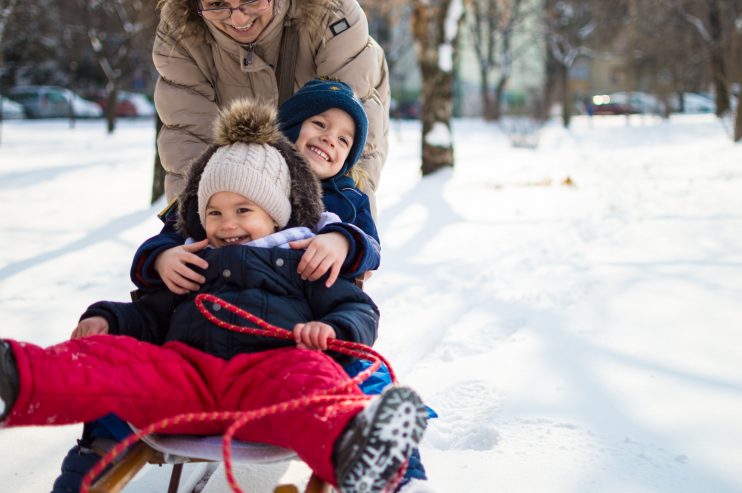While snow-covered grounds appear fluffy and powdery, don’t let its soft look fool you. According to the Consumer Product Safety Commission (CPSC), 160,000 sledding and tubing-related injuries occur annually. the most common injury seen from these accidents is head injuries. Other findings included:
- Kids 14 and under are most at risk for injury
- 15,000 of these injuries required emergency room visits
- Sleds can reach speeds of 25 mph
So, before your kids hit the slopes or the local park, be sure to review the following tips.
Never Miss a Beat!
Subscribe to Our HealthBeat Newsletter!
Thank you for subscribing!
You can now select the specific newsletters you'd like to receive.
You are already subscribed.
Subscribe to more newsletters in our email preference center.
Sorry, an error occurred. Please try again later.
Get Healthy Tips Sent to Your Phone!
Ice Skating
- Skate in the same direction as the crowd
- Avoid darting across the ice
- Never skate alone
- Not chew gum or eat candy while skating.
- Have your child wear a helmet, knee pads and elbow pads, especially while learning to skate.
Sledding
- Children less than 5 years of age should not sled alone.
- Keep young children separated from older children.
- Sled feet first or sitting up instead of lying down head-first to prevent head injuries.
- Consider having your child wear a (hockey not bicycle) helmet while sledding.
- Sleds should be structurally sound and free of sharp edges and splinters. The steering mechanism should be well lubricated.
- Sled slopes should be free of obstructions like trees or fences, covered in snow, not be too steep (slope of less than 30º), and end with a flat runoff.
- Avoid sledding in crowded areas.
Snow Skiing and Snowboarding
- Children should be taught to ski or snowboard by a qualified instructor in a program designed for children.
- Young children should always have adult supervision. Older children’s need for supervision depends on their maturity and skill. If older children are not with an adult, they should always have a friend with them.
- All skiers and snowboarders should wear a fitted helmet.
- Equipment should fit the child. Skiers should wear safety bindings that are adjusted at least every year. Snowboarders should wear gloves with built-in wrist guards. Hip pads are effective in preventing fractures. Eye protection or goggles should also be worn.
- Slopes should fit the ability and experience of the skier or snowboarder. Avoid crowded slopes.
For more tips on how to help kids safe, visit www.chp.edu/injury-prevention.
About UPMC
Headquartered in Pittsburgh, UPMC is a world-renowned health care provider and insurer. We operate 40 hospitals and 800 doctors’ offices and outpatient centers, with locations throughout Pennsylvania, Maryland, New York, West Virginia, and internationally. We employ 4,900 physicians, and we are leaders in clinical care, groundbreaking research, and treatment breakthroughs. U.S. News & World Report consistently ranks UPMC Presbyterian Shadyside as one of the nation’s best hospitals in many specialties and ranks UPMC Children’s Hospital of Pittsburgh on its Honor Roll of America’s Best Children’s Hospitals. We are dedicated to providing Life Changing Medicine to our communities.
